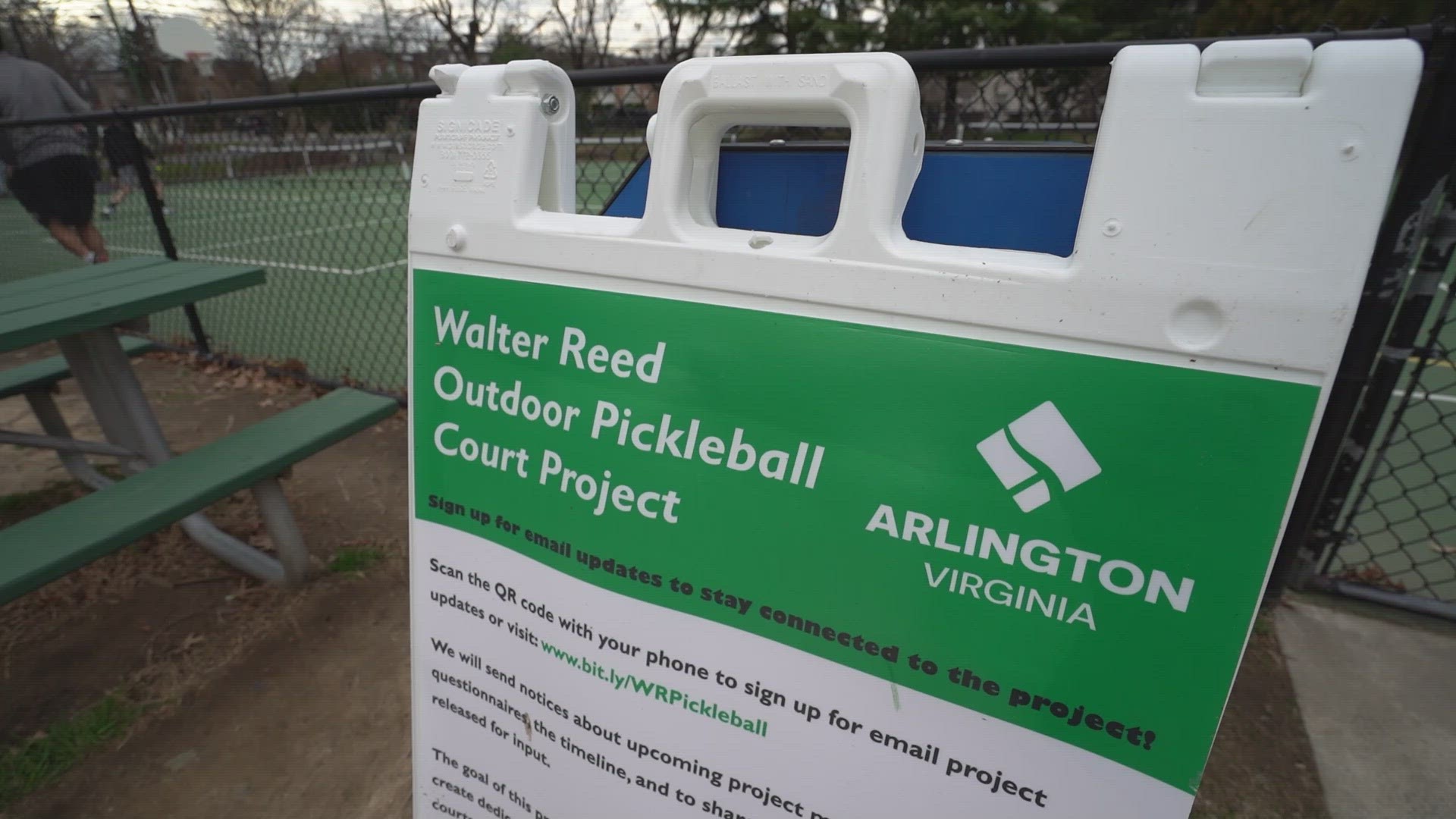WASHINGTON — The uproar over pickleball courts, and the clamor that neighbors say comes with the sport, has been a big headline around our area recently. So what’s all the noise really about? We turned to the experts - and the science.
THE QUESTION
Why is pickleball causing so much annoyance in neighborhoods? Is it louder than tennis, or is something else going on?
THE SOURCES
THE ANSWER
When it comes to potential pickleball peskiness, annoyance is more likely rooted in pitch and perception rather than the sport’s raw volume.
WHAT WE FOUND
In case you somehow haven’t heard, pickleball is really popping off in our area. The game is a hybrid of ping-pong, racquetball, and tennis. It looks pretty different from tennis though, and some people are upset about the noise —claiming the sounds are disruptive.
According to one resident, “It’s just too much.”
Neighbors have told WUSA9 that the sound is louder than tennis, and people have voiced opposition to court expansion in their communities. Why?
It turns out there could be a scientific reason why the sound made by pickleball hits differently than its long-standing cousin.

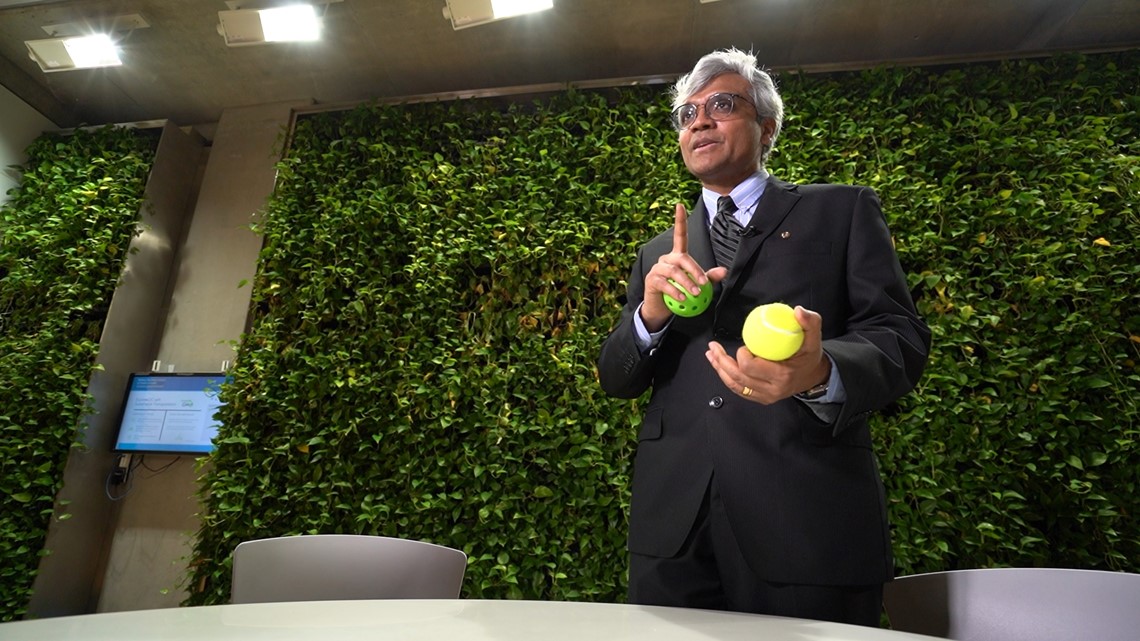
Professor Kausik Sarkar at George Washington University studies complex sonic problems as applied to the medical field. For this issue, he had a simple hypothesis: the harder, plastic outdoor pickleballs might produce a louder pop than the softer tennis ball.
“The pickleball is hard and the paddle itself is also hard,” he said, “while the tennis ball is soft.”
To test this, we visited some local tennis and pickleball courts and recruited a couple of players to help us out. Jim Faruki and Roy Epstein are Arlington neighbors and new friends, part of a growing community that has emerged as pickleball gains popularity.
“You can drive by tennis courts all day long and see them empty,” said Jim. “When you build pickleball courts, it's a magnet. It's a magnet for people to meet each other.”

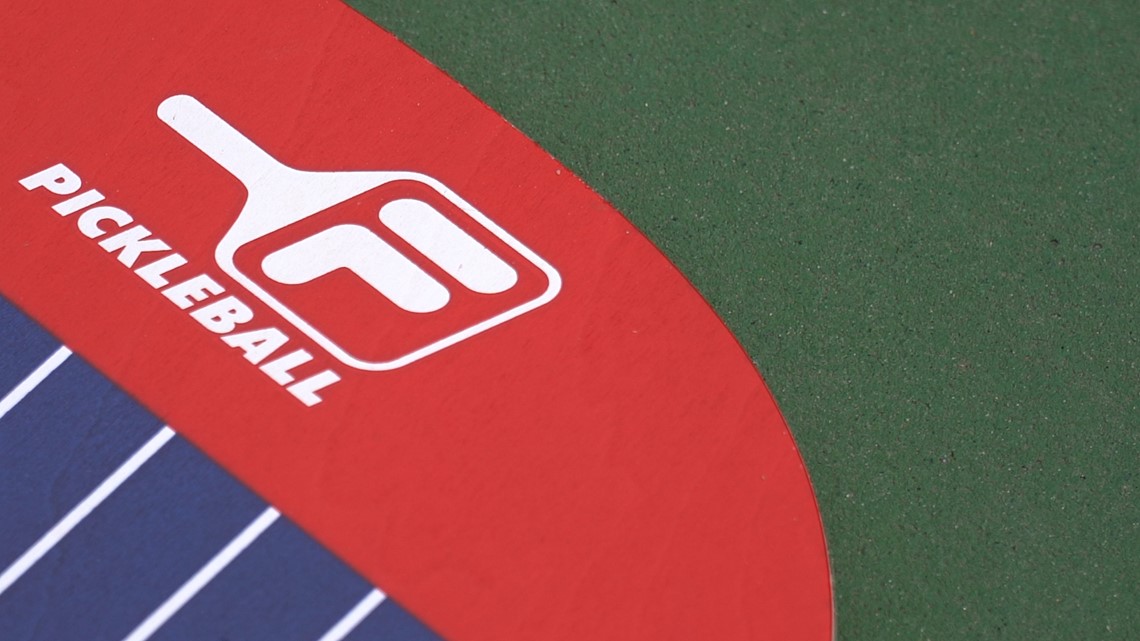
Comparing volume:
We took a sound level meter and measured the sound produced by 10 strikes of pickleball and paddle, and 10 strikes of a tennis ball and racquet.
The sound level meter picked up slightly louder hits from pickleball, and more often. Still, the differences were negligible, and the overall measurable volume was similar for both sports.
It’s also worth noting that the spikes in noise caused by each strike were comparable to the laughter and other noises made by players and our film crew.
After the test, we took the sound level meter across the street to measure the noise from nearby neighborhoods where many of the complaints originate. The pickleball courts emitted a steady stream of about 45 decibels, sometimes getting up to 50 or 55 at loud moments. Passing cars emitted up to 60 decibels.
The EPA has long identified 55 decibels as the maximum average outdoor noise level that can be maintained throughout the day without impacting “health and welfare.” According to our numbers, pickleball was usually below that average for the neighborhood we tested near Walter Reed Recreation Center.

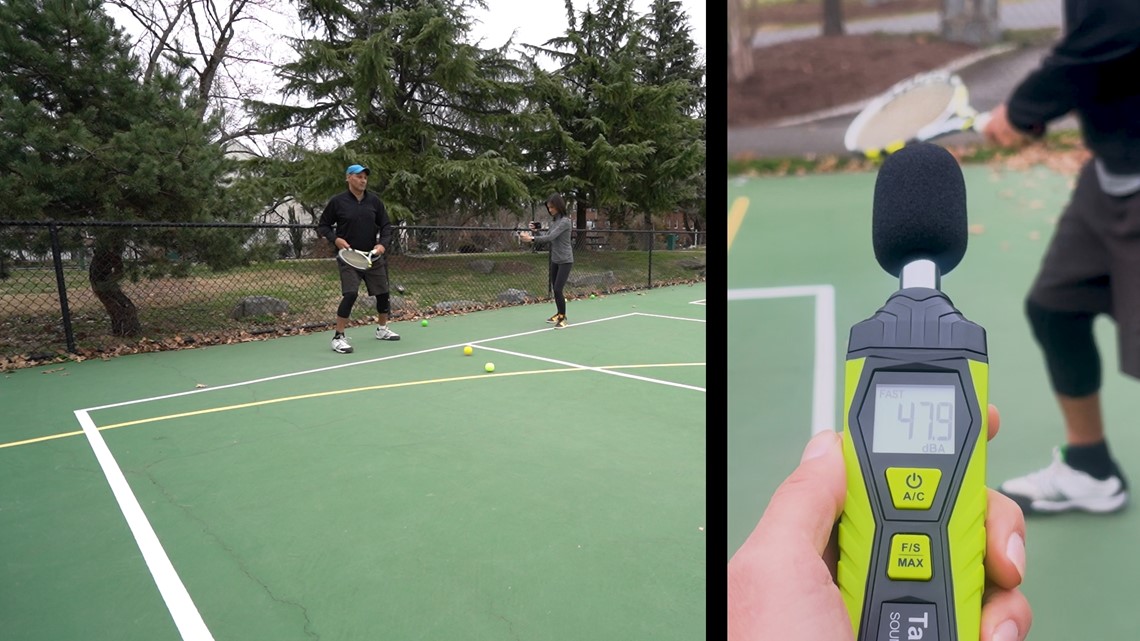
The type of sound matters:
Loudness is just one component. Another is frequency, also known as pitch. Low frequencies sound low and deep: think the bass guitar in your favorite rock band. Higher frequencies can sound higher and sharper, like a whistle or that annoying microphone feedback at karaoke
"We're not equally sensitive to all frequencies, so we have a very nonlinear frequency response," said American University audio technology professor Braxton Boren.
Put simply, our ears are really good at picking up mid-frequency noises, even when they’re relatively quiet.
“A certain amount of sound pressure at those frequencies will actually sound louder than the same amount of sound pressure at a very low frequency or at a very high frequency," Boren said.
Anything on the extremes is harder to hear — we aren’t as sensitive to low and high pitched sounds.
Following up on Boren’s comments, we ran a frequency analysis on our recordings of our racquet-sport duo hitting tennis balls and pickleballs.
Most of the noise made by hitting a tennis ball is in the low frequencies, below the zone to which we are most sensitive. A pickleball strike has a higher pitch, meaning our ears catch more of the noise it makes. It’s that higher frequency that makes the clamor of pickleball clearer from farther away compared to tennis.


Annoyance and psychology:
Finally, studies have found that annoyance isn’t just an acoustic problem - our psychology plays a big role too.
Both Professor Sarkar and Professor Boren explained that some sounds can be scientifically more annoying.
“A lot of the noise sources that we have today - automobiles, HVAC systems, things that are running continuously. We have a lot of noise, but a lot of it is very continuous noise and we’re able to be sort of habituated to it,” Boren said. “But things like pickleball, things that are more impulsive with unpredictable spikes where there will be some noise and then some silence and then some noise, that almost continues jarring your attention.”
Boren compared it to the sound of a dripping faucet.


“If you just left the faucet on all night, you would just have a stream of water and you would just go to sleep, but because you tried to turn it off and occasionally it's dripping, and you can’t focus on anything else because you have a relatively quiet background environment,” he explained, “that’s more annoying.”
There’s actually a whole field of study on the annoyance of sound. We dug into some research showing how a few non-acoustic factors contribute to someone’s audio irritation. They include the sound’s irregularity (think drippy faucet), what a person is doing when they hear it, and whether they believe the sound belongs in their environment.
So, we can VERIFY that in our testing, there wasn’t a significant difference in volume between pickleball and tennis. Instead, neighborhood annoyance is more likely a result of pickleball’s higher pitch and a variety of psychological factors.

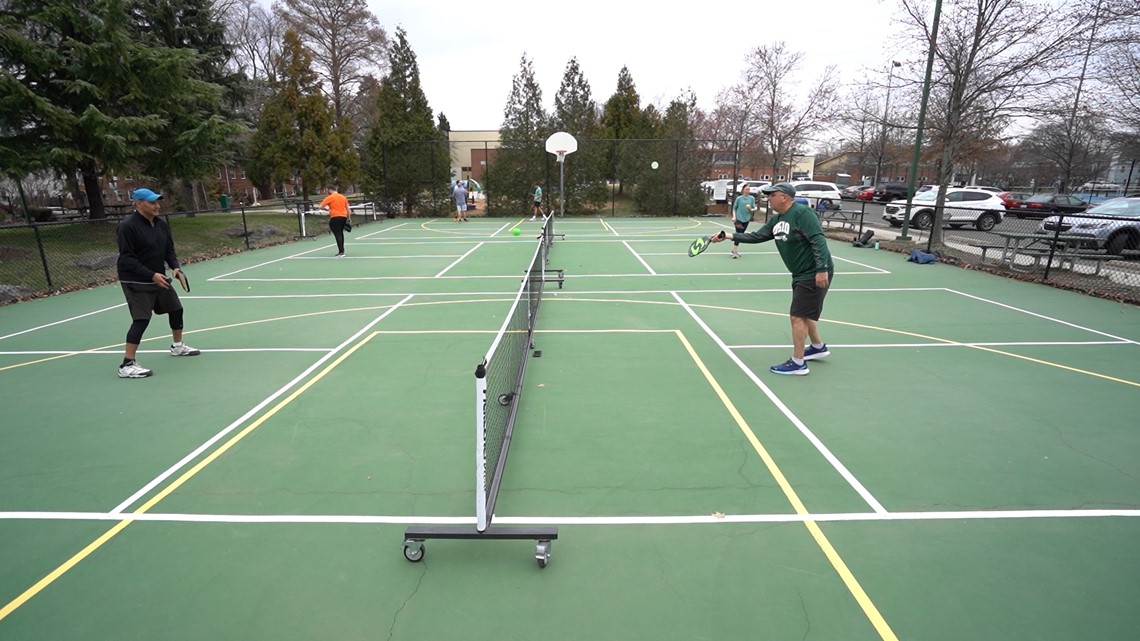
For Jim and Roy - and other fans of the game - pickleball resonates in a different way.
“Where else can you have people in the same town of different ages coming up and playing together and laughing?” said Roy.
“I think that’s really why people are here. They’re here for the social aspect of it. They’re here for physical activity,” said Jim. “This is a way of meeting people and sharing a love of something, which we need more of.”

